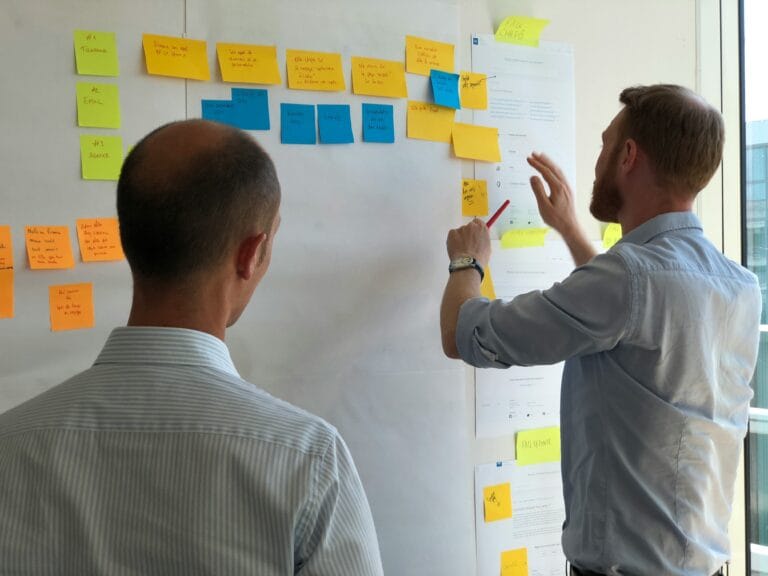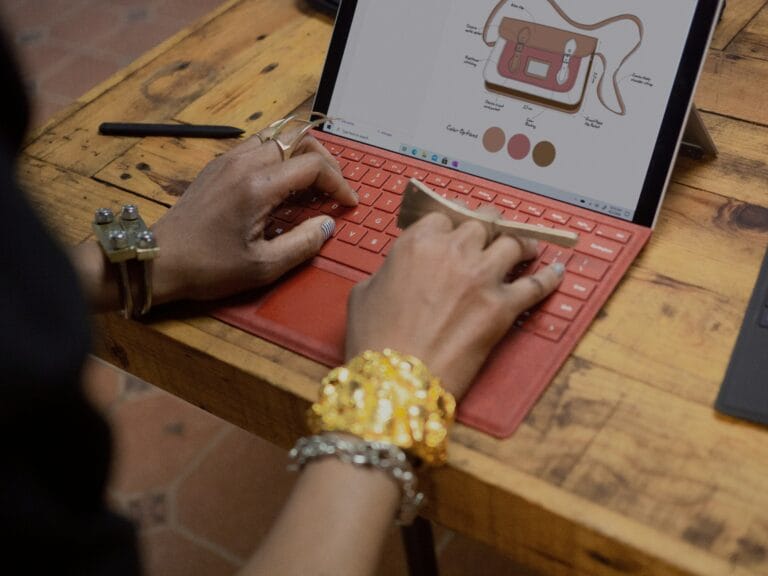Ever wondered why some online stores just seem to “get” you, showing the exact pair of sneakers you didn’t even realize you wanted,while others make you feel like you’re sorting through a digital yard sale? It’s not magic, and trust me, it’s not luck. The secret sauce? Predictive Personalization. It’s the techy sidekick you wish you’d had during those endless A/B tests,constantly learning, tweaking, and surfacing smarter recommendations with every single click. That’s what’s pushing conversion rates for some brands way past what you’ll see from basic personalization tactics.
If you’re running an eCommerce store and losing sleep over abandoned carts or flatlining engagement, you’re going to want to pay attention. Because while everyone’s talking about AI, very few are actually using it to proactively tailor the customer journey,in real time, as every shopper moves through your site. The difference is wild. And I’ve seen firsthand how Predictive Personalization can turn clunky “guess and hope” UX into those addictive, frictionless flows customers rave about (and, yeah, come back for again and again).
Let’s break down how data-driven insights are shaping this new era of eCommerce UX design and CRO,not just in theory, but with real examples and clear steps you can actually use to make your site smarter… and see the results in your sales numbers.
Introduction to Predictive Personalization
Let’s dive into the world of Predictive Personalization. If you’re in eCommerce, you’ve likely heard the buzz around it. But what exactly is it? In simple terms, Predictive Personalization is a method that uses AI and machine learning to tailor shopping experiences based on data insights. It’s like having a personal shopping assistant for every customer who knows what they want even before they do.

So, how does it work? Predictive Personalization analyzes vast amounts of customer data. Think browsing history, past purchases, and even the time of day they usually shop. By spotting patterns, it predicts what products or content might interest a shopper next. This isn’t just about a slight nudge; it’s about transforming the entire shopping journey into something that’s uniquely theirs.
Now, you might wonder why this is becoming such a hot topic. Well, personalization is no longer just a nice-to-have. It’s a must. According to McKinsey, 71% of consumers expect companies to deliver personalized interactions. And when they don’t get them, they’re not happy. Personalization might just be the key to staying competitive in today’s digital marketplace.
The role of AI in this can’t be overstated. AI-driven personalization lets businesses create detailed customer profiles and deliver experiences that feel personal and relevant. This is something Blikket has seen firsthand while working with partners like Mokki, where strategic optimizations in UX design led to significant boosts in conversion rates.
To wrap up, Predictive Personalization is reshaping eCommerce by transforming generic user experiences into personalized journeys. It’s about knowing your customers and anticipating their needs. As eCommerce marketers, embracing this technology isn’t just about staying afloat; it’s about thriving in a rapidly evolving market.
How Predictive Personalization Enhances eCommerce UX
Predictive Personalization is changing the game in eCommerce UX. Imagine walking into a store where everything is already set up just for you. That’s the kind of experience we’re talking about here. It feels like the shop knows you, your preferences, your likes, and even what you’re likely to buy next. And it’s all thanks to the magic of AI and real-time data.
Let’s start with personalized product recommendations. You know those “You might also like” suggestions? They’re no longer based on just what you bought last time. With Predictive Personalization, these recommendations are now crafted from real-time browsing habits, session data, and even your brand preferences. It’s like when you get that perfect book recommendation from a friend who knows your taste inside out.
Then there’s dynamic content delivery. This is where things get super interesting. Imagine visiting a website, and as you scroll, the content literally morphs before your eyes to match your interests. Say you’re a sneakerhead browsing a fashion site. Instead of a static homepage, the site might start showcasing the latest sneaker releases, curated just for you. This isn’t just a cool feature, it’s engaging, and it keeps users coming back for more.
We’re also seeing tailored user interfaces that adapt seamlessly to individual preferences. If a user tends to scroll quickly past certain sections, the site can adjust by highlighting more relevant content or products instantly. It’s like having a personal shopper who knows exactly what you want and when you want it.
Blikket has been at the forefront of this transformation. Take our work with Mokki, for instance. By implementing strategic UX design optimizations, we saw a massive boost in conversion rates. It’s all about creating a shopping experience that feels less like browsing and more like a personalized journey.
Now, you might wonder if this all feels a bit too much, like the site is watching your every move. But here’s the thing, Predictive Personalization respects user privacy by using non-personally identifiable information to tailor these experiences. It’s about making the shopping journey smoother, not invasive.
In short, Predictive Personalization is all about making the online shopping experience as intuitive and enjoyable as possible. It’s no longer just about selling products; it’s about building relationships and delivering experiences that keep customers coming back. For eCommerce businesses, this means not just staying relevant but thriving in a competitive market.
Impact on Conversion Rate Optimization (CRO)
If you want to see real traction in your eCommerce conversion rates, Predictive Personalization is like flipping on the lights in a dark room. Suddenly, everything’s clear. Customers don’t just get a static page. They arrive to find products, offers, and content ready-made for their tastes and needs, before they even know what they’re looking for. That’s the magic that gets people to stick around, engage, and click “buy.”

Let’s get straight to it, people convert when they feel like your site “gets” them. Predictive Personalization is what turns a wandering shopper into an excited buyer. Imagine a visitor lands on your store; instead of a generic experience, they see a homepage that calls out their favorite brands, serves up a curated deal just for them, and recommends products based on how they browsed similar sites. That’s not just a nice touch, it’s a proven way to ramp up conversions and drive more sales over time by mastering Conversion Rate Optimization.
You’ll notice bounce rates drop too. Here’s why: if you show relevant content right away, you catch attention before visitors wander off. For one footwear brand we worked with, implementing predictive recommendations and dynamic product sections helped bring bounce rates down by almost 18% in the first month. Shoppers started exploring more, interacting with new offers they’d normally miss. And when they stuck around, purchase rates climbed, sometimes doubling from earlier campaign averages.
It comes down to a handful of mechanisms working together:
- Relevant product recommendations: No more scattershot promotions. Show what each individual is most likely to buy, right on the homepage and in high-traffic spots.
- Dynamic content blocks: Different customers get different experiences, new visitors might see a first-time discount banner while loyal ones are nudged toward complementary products.
- Smart segmenting: Predictive tools spot patterns fast, like who’s a deal-hunter versus a trend-seeker, then tweak everything from copy to CTAs on the fly.
- Personalized follow-up: Abandoned cart? Send a perfectly-timed email featuring products the shopper nearly bought, along with a custom offer to push them over the line.
All these elements add up. We’re not talking a small bump either. Brands who invest in Predictive Personalization typically see a 5-15% revenue lift and as much as a 25% increase in order values, just by getting the right products and incentives in front of the right eyes. When we ran these tactics for one Blikket partner, they hit a 12.5% conversion rate after optimizing just their product pages and user flow. That kind of result isn’t exceptional; it’s the new benchmark.
In a nutshell, Predictive Personalization takes site visitors from “maybe” to “absolutely,” faster, smoother, and on their terms. That’s how you move the conversion needle in today’s hyper-competitive market. And honestly, who doesn’t want to see bounce rates shrink and purchase rates soar?
Practical Benefits for eCommerce Businesses
Let’s cut to the chase. If you’re in eCommerce, Predictive Personalization isn’t just a buzzword, it’s a game changer. Think of it like having a superpower that lets you read your customers’ minds, giving them exactly what they want before they even ask. This isn’t just about making your customers happy, it’s about boosting your bottom line too. Learn more about how data-driven design can transform your UX and revenue in our comprehensive guide.

First off, let’s talk customer satisfaction. When you’re using Predictive Personalization, you’re basically rolling out the red carpet for each visitor. They get personalized recommendations that feel like they’re tailored just for them, based on their past purchases and browsing habits. It’s like walking into a store where the staff knows your name and exactly what you love. Happy customers stick around longer, explore more, and are more likely to make a purchase. That’s a win for everyone.
Next up, sales. Predictive Personalization is a sales powerhouse. By analyzing customer data, you can serve up targeted discounts and product suggestions that resonate with individual shoppers. This isn’t guesswork, it’s data-driven magic that boosts conversion rates. Imagine offering a discount on a pair of shoes just as a customer is about to leave your site. That nudge can turn a window shopper into a paying customer. Plus, when customers find what they love, they’re likely to spend more, increasing your average order value.
Finally, let’s not forget about brand loyalty. In a world where consumers are bombarded with options, standing out is everything. When customers feel understood and valued, they’re more likely to return. You’re not just selling products, you’re building relationships. And those relationships translate to repeat business and word-of-mouth referrals. It’s like having a community of brand advocates who are excited to share their experiences.
So, why is this important? Because in today’s digital marketplace, personalization is the key to differentiation. It’s not just about survival; it’s about thriving. When you combine Predictive Personalization with a solid marketing strategy, you’re setting your business up for long-term success. And that’s something every eCommerce leader should aim for.
If you’re curious about seeing this in action, look at what Blikket achieved with HappyFlops. We leveraged Predictive Personalization to boost revenue and conversion rates, proving that when done right, the results speak for themselves. Explore more about how conversion rate optimization strategies can further enhance your approach.
Steps to Implement Predictive Personalization
So, you’ve decided to dive into predictive personalization for your eCommerce business. Great choice! It can transform how you engage with customers by anticipating their needs and preferences. But where do you start? Let’s break it down into a few key steps.
1. Start with Data Collection
Data is the backbone of predictive personalization. Begin by gathering information on customer behavior, preferences, and interactions across your site. This includes browsing history, purchase history, and even the time of day they visit. The more data you can collect, the better. But remember, it’s crucial to respect user privacy. Make sure you’re transparent about data usage and comply with regulations like GDPR. This approach aligns with the principles of customer segmentation, which helps in breaking down your audience into actionable segments for better targeting.
2. Choose the Right AI Tools
Next, you’ll need to find the right AI tools to analyze your data and generate insights. There are plenty of platforms out there, from basic analytics tools to advanced machine learning solutions. Consider what fits your budget and technical capabilities. The goal is to use AI to spot patterns and predict what your customers want. Tools like those offered by Bloomreach can help by providing real-time insights and personalized recommendations.
3. Implement and Test
With your tools in place, it’s time to put predictive personalization into action. Start small by personalizing a few key touchpoints, like product recommendations or email marketing campaigns. A/B testing is your friend here. It allows you to experiment and see what works best for your audience. Adjust your strategies based on what’s driving engagement and conversions. This iterative process is crucial for ensuring your efforts are aligned with user expectations, as emphasized in Split Testing content.
4. Continuous Optimization
Predictive personalization isn’t a set-it-and-forget-it strategy. It requires constant refinement. Use analytics to track performance and tweak your approach as needed. This continuous optimization ensures your personalization efforts remain effective and relevant. Tools like those from Sayonetech emphasize the importance of real-time adjustments to meet customer expectations.
5. Scale Your Efforts
Once you’ve nailed down what works, it’s time to scale. Extend personalized experiences across more channels and customer touchpoints. This might include expanding from your website to include mobile apps and social media. The aim is to create a seamless, personalized journey for your customers, no matter where they interact with your brand. Understanding Data-Driven Design can also play a vital role in ensuring that these touchpoints are optimized for user engagement and satisfaction.
Following these steps, you should be well on your way to integrating predictive personalization into your business strategy. It’s all about making the shopping experience as intuitive and enjoyable as possible, which is something every eCommerce leader should strive for. And remember, at Blikket, we’re here to help you every step of the way, just like we did for clients like Mokki and Naked Root, ensuring that your personalization strategy leads to real growth and engagement.
Conclusion: The Future of eCommerce with Predictive Personalization
If there’s one thing to take away from everything we’ve discussed, it’s this: Predictive Personalization is no longer just a nice addition to your eCommerce toolkit, it’s crucial for survival in today’s market. The competition is fierce, and customers expect more than ever before. They want experiences that feel personal and tailored to them, and that’s exactly where Predictive Personalization comes into play.
Think about it. With AI technologies continuously evolving, the possibilities for creating these unique shopping experiences are expanding rapidly. It’s not just about knowing what your customer bought last time; it’s about predicting what they’ll want next and engaging them in ways they didn’t even know were possible. This isn’t science fiction, it’s happening right now.

As we look to the future, there’s no doubt that those who master Predictive Personalization will be the ones leading the charge. The ability to harness real-time data and AI not only enhances customer experiences but also drives conversions and builds loyalty. It’s about creating a seamless journey that keeps customers coming back, and that’s what every eCommerce business should aim for.
So, what’s next? Businesses need to adopt these technologies and strategies now. Waiting might mean falling behind. We’ve seen how companies like Blikket have successfully implemented these concepts with clients such as HappyFresh, resulting in significant boosts in engagement and sales. These aren’t just numbers, they’re proof that Predictive Personalization works when done right.
Ultimately, the future of eCommerce is all about innovation and adaptation. Embrace these changes, and you’ll not only meet customer expectations but exceed them, securing your place in the ever-evolving digital marketplace. Are you ready to lead the way?
Here’s the bottom line
If you want your store to stop feeling like just another tab in a crowded browser, Predictive Personalization is where you put your energy. It’s not just about throwing smarter pop-ups or running more A/B tests. You’re making your site pay attention,to every click, scroll, and pause,so your shoppers see what actually matters to them. The results? Higher conversions, happier customers, and a real edge over competitors who think personalization means using someone’s first name in an email.
- Start capturing meaningful data (with full transparency and respect for privacy).
- Pick AI tools that fit your business, not just hype.
- Test and refine until the “aha” moments show up,then roll out those winners everywhere you can.
Honestly, if you keep letting visitors slip through the cracks, you’re handing over sales to brands who figured this out yesterday. So, what’s one thing stopping you from rolling out Predictive Personalization right now? Let’s talk it out in the comments,what’s your next move?










